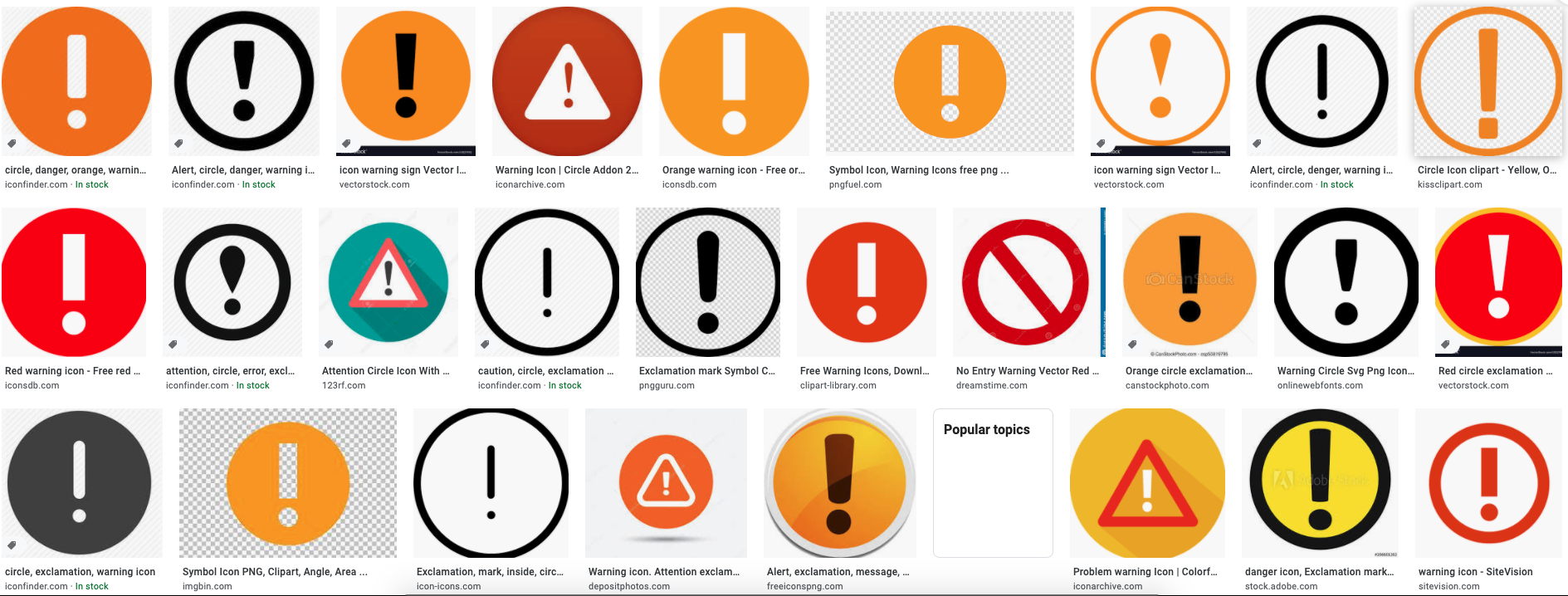pb 插入報列在此處不
Twitter’s recent move to put notices on tweets themselves is one of the most controversial social media features during our times. As a design technologist, I can’t help but wonder the decision-making process behind it. It’s a perfect example of how a seemingly small feature can invoke polarizing responses from its various user groups, in this case, trigger a national debate about the underlying issue — freedom of speech. I am intrigued by this bold move and want to document my thoughts about the product design choices it entails.
Twitter最近在自己的推文上發布通知的舉動是我們時代最具爭議的社交媒體功能之一。 作為一名設計技術人員,我不禁想知道背后的決策過程。 這是一個看似很小的功能如何調用其各個用戶群體的兩極分化回應的完美示例,在這種情況下,引發了有關根本問題(言論自由)的全國性辯論。 我對這一大膽的舉動感到很感興趣,并希望記錄下我對產品設計選擇的想法。
I started researching the topic by reading Twitter’s Notices on Twitter policy page. A skim tells me there are several types of notices Twitter can post on a tweet or an account. A recurring theme I noticed is that Twitter describes the purpose of these notices as providing context. It’s not fact-checking, not labeling, not altering the speech in any way. It’s providing context. It’s a very neutral choice of words.
我通過閱讀Twitter政策頁面上的Twitter聲明開始研究該主題。 略讀告訴我,Twitter可以在推文或帳戶上發布幾種通知。 我注意到一個反復出現的主題是Twitter將這些通知的目的描述為提供上下文 。 這不是事實檢查,不是標簽,也不是以任何方式改變言論。 它提供了上下文 。 這是非常中性的詞語選擇。
Among these notices, the most interesting, perhaps the most controversial one is the fact-checking label:
在這些通知中,最有趣的,也許是最具爭議的是事實檢查標簽:
Right away, the warning icon caught my eyes. It’s unusually larger than all the surrounding icons and text. One might argue that it’s almost too large. It appears the label has gone through iterations because the example given on the policy page is different:
立即,警告圖標引起了我的注意。 它比周圍的所有圖標和文本大得多。 有人可能會說它太大了。 標簽似乎經過了迭代,因為策略頁面上給出的示例不同:

The text is bolded in this one, and the icon-to-text size ratio is smaller. There is a caret icon at the right end that is likely placed to indicate you will be taken to another page, away from this tweet. This icon is absent in the latest version. I speculate that these changes were all made towards an effort to drawing more attention to the warning icon and ultimately promoting the fact-checking link.
文本在該文本中以粗體顯示,并且圖標與文本的大小比較小。 右端有一個插入符號圖標,該圖標可能表示您將被帶到另一條遠離此推文的頁面。 最新版本中沒有此圖標。 我推測所有這些更改都是為了使人們更加注意警告圖標并最終促進事實檢查鏈接。
I believe Twitter went out of their way to create this warning icon for the fact-checking label because I couldn’t find it used anywhere else in the app. Not with any other warning or error states. It’s possible that the designers also bent the UX guidelines for the large icon-to-text size ratio. But hey, if one needs to break the rules and create exceptions of a design system, this is THE feature, right?!
我相信Twitter會竭盡全力為事實檢查標簽創建此警告圖標,因為我找不到它在應用程序中的其他任何地方使用。 沒有其他任何警告或錯誤狀態。 設計人員可能還會針對大的圖標與文本尺寸比例而彎曲UX準則。 但是,嘿,如果需要打破規則并創建設計系統的例外,這就是功能,對嗎?
I am also fascinated by Twitter’s loyalty to the only blue color in their palette: Twitter Blue (#1DA1F2). Everywhere I look, this blue really stands out because it’s the only vibrant color that highlights certain pieces of information. The fact-checking label is no exception in this regard. Traditionally, this type of warning icon is associated with orange or red:
Twitter對調色板中唯一的藍色的忠誠也使我著迷: Twitter Blue (#1DA1F2)。 在我所看到的任何地方,這種藍色確實引人注目,因為它是唯一能突出顯示某些信息的鮮艷顏色。 在這方面,事實檢查標簽也不例外。 傳統上,這種警告圖標與橙色或紅色關聯:

Twitter bent the rules, but not to the extent of introducing an orange or red color. They stayed consistent with the existing color palette. Orange or red in the context of a warning usually has a negative tone to it, so perhaps this is another way of saying, “we as a platform hold a neutral stance when it comes to fact-checking.”
Twitter違反了規則,但沒有引入橙色或紅色。 它們與現有的調色板保持一致。 警告中的橙色或紅色通常帶有負面色彩,所以也許這是另一種說法,“我們作為平臺在事實核查中持中立立場。”
Despite Twitter’s efforts to maintaining a neutral position as much as possible, this label still pissed off a lot of people. In most cases, it’s because the content this label points to contradicts the original tweet. To whoever being fact-checked on by this feature, it feels as if someone blatantly pointed out their misleading or wrongful information against their will in the public eye. Even when it’s done by a computer algorithm, it can still make the tweet author feel embarrassed and even humiliated.
盡管Twitter盡了最大努力保持中立地位,但這個標簽仍然激怒了很多人。 在大多數情況下,這是因為此標簽指向的內容與原始推文相矛盾。 對于通過此功能進行事實檢查的任何人,感覺好像有人在公眾眼中公然指出了他們的誤導或錯誤信息。 即使通過計算機算法完成,它仍然可以使發推特作者感到尷尬甚至羞辱。
I wonder what a product designer can do address this? At the beginning of the post, I mentioned that Twitter’s official words about the purpose of this feature are “providing context”. I wonder what kinds of responses would it trigger if the text says “Get contexts about mail-in ballots”? or simply “learn more about mail-in ballots”? I also wonder if people would react differently if the warning icon was absent, or replaced with something else?
我想知道產品設計師可以解決這個問題嗎? 在文章開頭,我提到Twitter關于此功能目的的官方用語是“提供上下文”。 我想知道,如果文本顯示“獲取有關郵寄選票的上下文”,會引起什么React? 還是只是“了解有關郵寄選票的更多信息”? 我還想知道,如果缺少警告圖標或將其替換為其他內容,人們是否會做出不同的React?
It’s also possible that Twitter doesn’t think the issue with angering responses to the label isn’t worth addressing. Facts are facts, after all. And I have no doubt that every decision made in building this feature is a difficult and profound one.
Twitter也有可能不認為激怒該標簽的問題不值得解決。 事實畢竟是事實。 我毫不懷疑,構建此功能時做出的每一個決定都是困難而深刻的。
“With great power there must also come great responsibility.”
“強大的力量還必須承擔巨大的責任。”
— Spider-Man
- 蜘蛛俠
翻譯自: https://uxdesign.cc/get-the-facts-about-insert-issue-here-3b482279190b
pb 插入報列在此處不
本文來自互聯網用戶投稿,該文觀點僅代表作者本人,不代表本站立場。本站僅提供信息存儲空間服務,不擁有所有權,不承擔相關法律責任。 如若轉載,請注明出處:http://www.pswp.cn/news/274132.shtml 繁體地址,請注明出處:http://hk.pswp.cn/news/274132.shtml 英文地址,請注明出處:http://en.pswp.cn/news/274132.shtml
如若內容造成侵權/違法違規/事實不符,請聯系多彩編程網進行投訴反饋email:809451989@qq.com,一經查實,立即刪除!



)











)


)